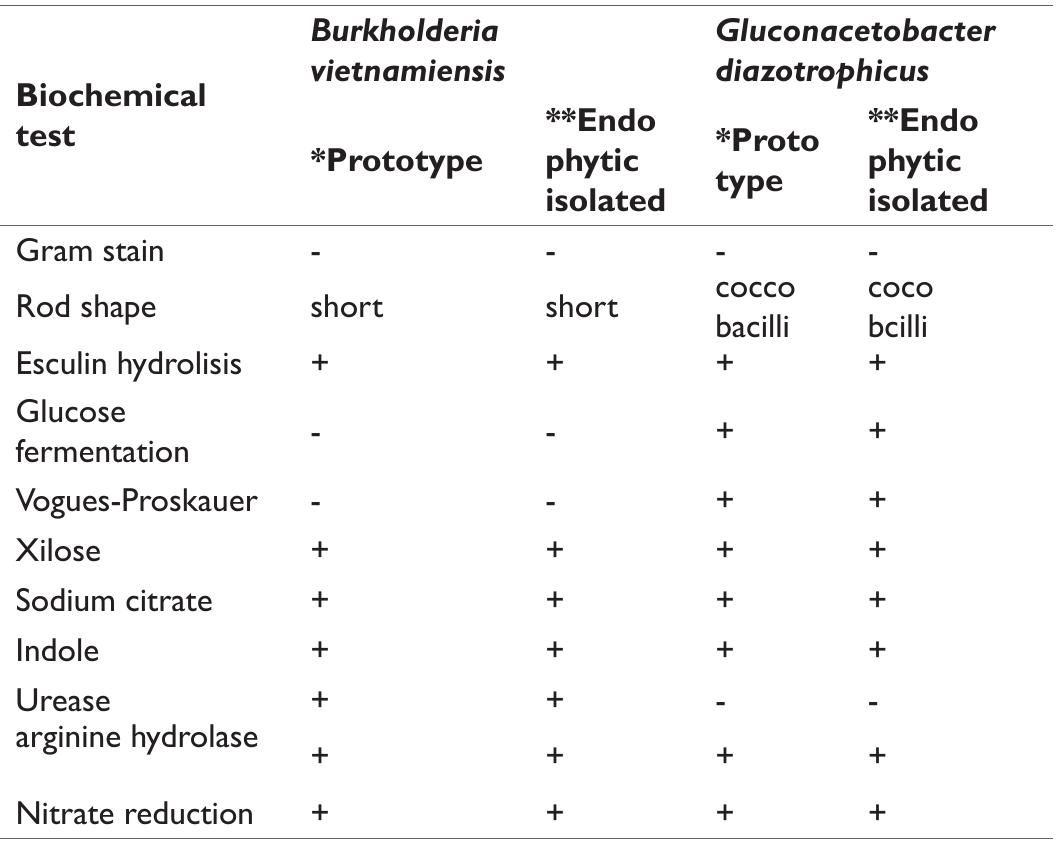Healthy growth of Zea mays requires NH4NO3 as nitrogen fertilizer (NF), and its uptake is important to avoid loss of the NF. An alternative solution to enhance the root uptake capacity of Z. mays of NF at a dose to supply Z. mays demand... more
defines Biotechnology as we know nowadays as an interdisciplinary and intradisciplinary collaboration of scientists from various fields. Furthermore, the key disciplines are biological sciences, informatics, biochemistry, mathematics and... more
The genus Burkholderia is a large group of species of bacteria that inhabit a wide range of environments. We previously recommended, based on multilocus sequence analysis, that the genus be separated into two distinct groups-one that... more
A survey of our in-house bacterial collection identified a group of six strains isolated from the tomato rhizoplane that possessed 16S rRNA gene sequences with 98.2% sequence similarity to Paraburkholderia pallida, suggesting that these... more
Burkholderia mimosarum strain LMG 23256 T is an aerobic, motile, Gram-negative, non-sporeforming rod that can exist as a soil saprophyte or as a legume microsymbiont of Mimosa pigra (giant sensitive plant). LMG 23256 T was isolated from a... more
The genus Burkholderia is a large group of species of bacteria that inhabit a wide range of environments. We previously recommended, based on multilocus sequence analysis, that the genus be separated into two distinct groups-one that... more
Legumes such as soybean establish symbiotic relation with nitrogen fixing bacteria such as Rhizobia. Nitrogen fixation via legume-rhizobium symbiosis is the most important source of Nitrogen in agro-ecosystems. But environmental stresses... more
A survey of our in-house bacterial collection identified a group of six strains isolated from the tomato rhizoplane that possessed 16S rRNA gene sequences with 98.2% sequence similarity to Paraburkholderia pallida, suggesting that these... more
Healthy growth of Zea mays requires NH4NO3 as nitrogen fertilizer (NF), and its uptake is important to avoid loss of the NF. An alternative solution to enhance the root uptake capacity of Z. mays of NF at a dose to supply Z. mays demand... more
Healthy growth of Zea mays requires NH 4 NO 3 as nitrogen fertilizer (NF), and its uptake is important to avoid loss of the NF. An alternative solution to enhance the root uptake capacity of Z. mays of NF at a dose to supply Z. mays... more
Although the taxonomy of Burkholderia has been extensively scrutinized, significant uncertainty remains regarding the generic boundaries and composition of this large and heterogeneous taxon. Here we used the amino acid and nucleotide... more
A study was conducted in green house of Department of Agricultural Microbiology, College of Agriculture, Chhattisgarh during 2015-16 to study the effect of Rhizobium and Phosphorous Solubulizing Bacteria inoculation on growth performance... more
As agriculture and food security face unprecedented challenges, emerging agricultural innovations and existing practices require ongoing examination in the context of sustainability. In this review, we focus on the use of probiotic... more
The genus Burkholderia is a large group of species of bacteria that inhabit a wide range of environments. We previously recommended, based on multilocus sequence analysis, that the genus be separated into two distinct groups-one that... more
The genus Burkholderia is a large group of species of bacteria that inhabit a wide range of environments. We previously recommended, based on multilocus sequence analysis, that the genus be separated into two distinct groups-one that... more
forming rod that can exist as a soil saprophyte or as a legume microsymbiont of Mimosa pigra (giant sensitive plant). LMG 23256T was isolated from a nodule recovered from the roots of the M. pigra growing in Anso, Taiwan. LMG 23256T is... more
Although the taxonomy of Burkholderia has been extensively scrutinized, significant uncertainty remains regarding the generic boundaries and composition of this large and heterogeneous taxon. Here we used the amino acid and nucleotide... more
10.1601/nm.26956 caballeronis is a plant-associated bacterium. Strain TNe-841T was isolated from the rhizosphere of tomato (Solanum lycopersicum L. var. lycopersicum) growing in Nepantla Mexico State. Initially this bacterium was found to... more
Rhizobium mesoamericanum STM6155 (INSCD = ATYY01000000) is an aerobic, motile, Gram-negative, non-sporeforming rod that can exist as a soil saprophyte or as an effective nitrogen fixing microsymbiont of the legume Mimosa pudica L..... more
Ensifer sp. PC2 is an aerobic, motile, Gram-negative, non-spore-forming rod that was isolated from a nitrogen-fixing nodule of the tree legume P. cineraria (L.) Druce (Khejri), which is a keystone species that grows in arid and semi-arid... more
The genus Burkholderia is a large group of species of bacteria that inhabit a wide range of environments. We previously recommended, based on multilocus sequence anal- ysis, that the genus be separated into two distinct groups—one that... more
Burkholderia mimosarum strain LMG 23256(T) is an aerobic, motile, Gram-negative, non-spore-forming rod that can exist as a soil saprophyte or as a legume microsymbiont of Mimosa pigra (giant sensitive plant). LMG 23256(T) was isolated... more
Burkholderia sp. strain WSM2230 is an aerobic, motile, Gram-negative, non-spore-forming acid-tolerant rod isolated from acidic soil collected in 2001 from Karijini National Park, Western Australia, using Kennedia coccinea (Coral Vine) as... more
Burkholderia sp. strain WSM2232 is an aerobic, motile, Gram-negative, non-spore-forming acid-tolerant rod that was trapped in 2001 from acidic soil collected from Karijini National Park (Australia) using Gastrolobium capitatum as a host.... more







